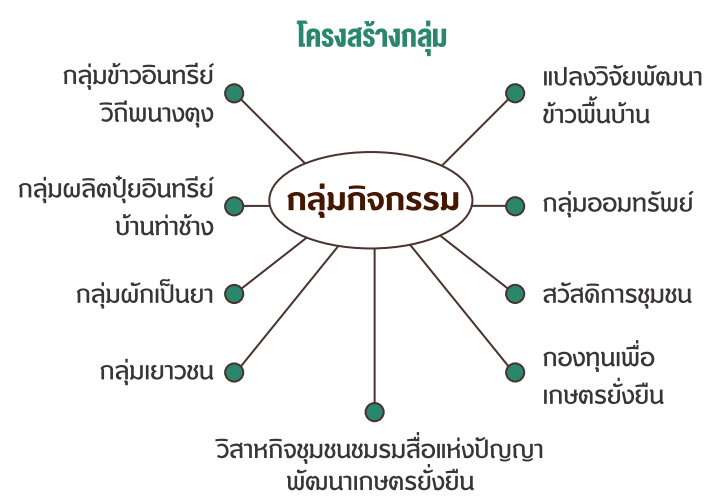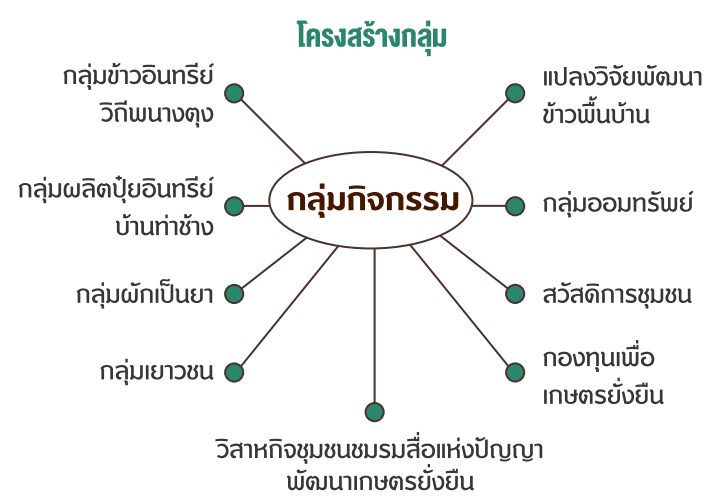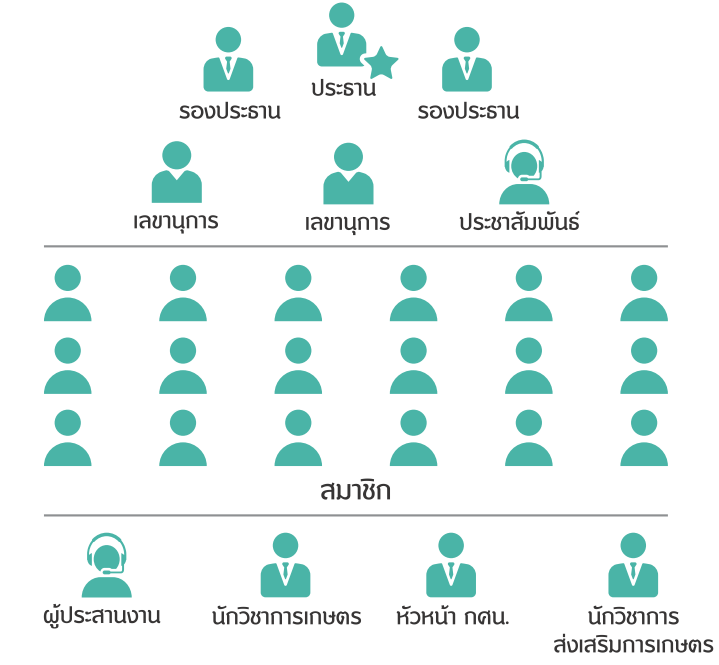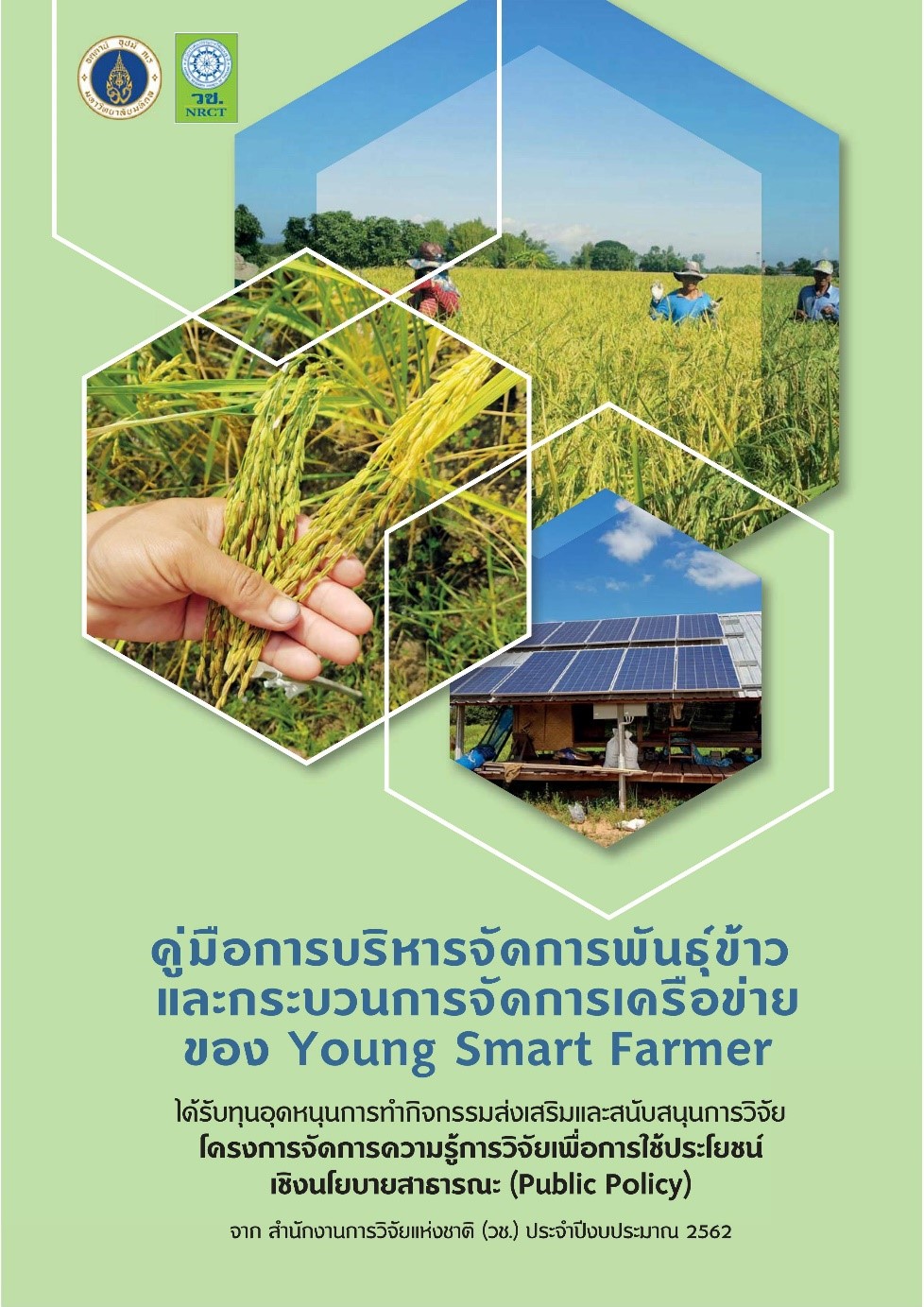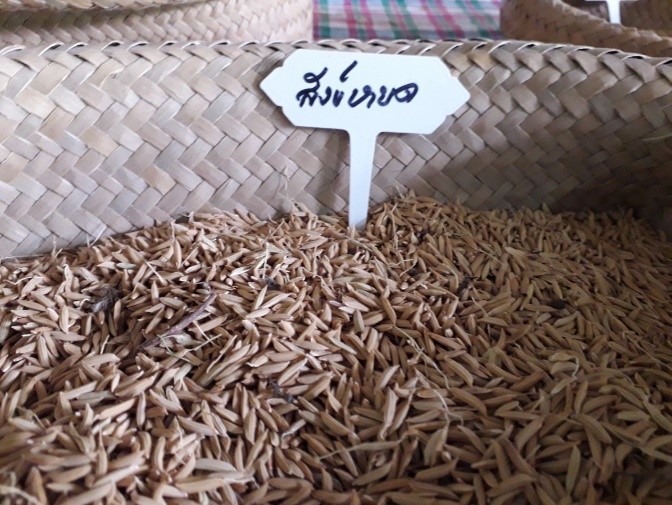Knowledge management for the management of rice varieties and the network management method of Young Smart Farmer to accommodate changing settings
Knowledge management for rice varieties and network management of Young Smart Farmer to cope with climate variability
Rice is the main agricultural product of Thailand and is the staple food of the Thai people. In order for Thai farmers to produce high yields of rice, there are a variety of factors that need to be taken into consideration, such as the soil properties, the amount of water available, and the technology used. However, the most important factor is the choice of a suitable rice variety. It should be disease and pest resistant, able to withstand environmental changes, and be able to meet the demands of the market. Unfortunately, the lack of high-quality seeds is a major issue that is affecting farmers currently. The seeds that are used are often impure and there is little knowledge about how to select and store them properly. Even purchasing seeds from private companies does not guarantee the quality. For this reason, the government needs to invest heavily in the construction of seed quality improvement factories or rice seed centers. This will ensure farmers have access to high-quality seeds and can achieve better yields of rice.
This project is geared towards exploring the learning strategies, accumulation, and dissemination of knowledge of rice breed management among farmers in different parts of Thailand. It will involve researching the Young Smart Farmer network and creating manuals and infographics to summarize the knowledge of rice breed management to better adjust to the environment and public policy changes with the participation of the local community.
The research team conducted documentary research to gain an in-depth understanding of the community context. They used a variety of methods such as interviews, group discussions and by learning from farmers' groups in four regions, namely northern, lower north, northeastern and southern. These regions included Khi Lek Sub-district, Mae Rim District, Chiang Mai Province; Nong Phra Subdistrict, Wang Sai Phun District Phichit Province; Kut Chum Subdistrict, Kut Chum District, Yasothon Province; and Phanang Tung Subdistrict, Khuan Khanun District, Phatthalung Province. The results of the study indicated that the formation of an expanded seed production group was necessary in order to combat the lack of high-quality rice seeds and the increasing costs of rice seeds, which had resulted in low yields, which caused the problem of increasing costs. In addition, it came from the realization that the native rice seed began to disappear. Therefore, it is necessary to conserve and continue to propagate. In the rainy season, farmers plan, discuss and exchange problems both before planting and during planting. This includes jointly inspecting the field at least 3 times before harvesting, where every step of rice seed production complies with the requirements of the National Bureau of Agricultural Commodity and Food Standards for rice seed quality, Ministry of Agriculture and Cooperatives.
The creation of the Young Smart Farmer group and network was precipitated by a paucity of rice seed and a desire to save local rice seed collectively. Farmers formed a registered community enterprise group and a network of farmers with the same goal for group activities or adaptation to existence in order to produce rice seeds and exchange information within the group. This involves arranging seed production to match demand. There will be government entities in every region to assist with knowledge, practices, quality control, and inspection of rice seeds. Members are now able to communicate with one another via the internet. The majority of them share experiences and exchange information using the LINE program (LINE) or Facebook (Facebook) network. This includes public relations to introduce the group to the outside world. It is also a distribution channel for agricultural seeds and products. The compilation of a knowledge summary guide titled The Manual for Vast Rice Fields, Villagers' Edition The guidebook contains the subsequent steps: 1) Content design that takes into account the manual's intended audience is crucial. 2) Testing the target group's comprehension 3) developing an appealing and readable book 4) Producing and distributing the guidebook to farmers and government entities in the study region. It contains seed growers' auxiliary inputs, including combine harvesters, seed sorters, and paddy dryers for moisture reduction. In addition to supporting knowledge and technology by organizing training to improve understanding of seed production and the development of key cultivars for farmers, the organization provides support for knowledge and technology. It also includes improving local weather forecast data and returning weather forecast data to farmers via various channels, such as social media (Farmer Group Line, Farmer Group Facebook), enhancing production skills, including marketing and computer literacy, as well as the use of technology and innovation, and providing financial support for young farmers. Government agencies must assist in this in order to provide incentives and prevent the next generation of farmers from pursuing careers outside the agriculture industry.
-
http://www.thai-explore.net/search_detail/result/9555-➞
-
https://thereporter.asia/th/2021/07/17/mahidol-4/https://thereporter.asia/th/2021/07/17/mahidol-4/➞
-
https://www.facebook.com/143696702651835/posts/1438924216462404/?d=n&paipv=0&eav=AfY_iCZJa3h5l4gvEsJI4JYkpL7lMIuE1_vRg1NLnXhdIu2Lk7krDPSS-wGkgPx_sKc&_rdrhttps://www.facebook.com/143696702651835/posts/1438924216462404/?d=n&paipv=0&eav=AfY_iCZJa3h5l4gvEsJI4JYkpL7lMIuE1_vRg1NLnXhdIu2Lk7krDPSS-wGkgPx_sKc&_rdr➞
Network agencies that support and promote agriculture, including Department of Local Administration and farmers in the area


